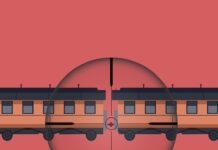Archaeologists have now produced the most complete digital reconstruction of Roman roads ever attempted.
Using LIDAR scans, satellite data and historical GIS, teams across Europe have traced forgotten routes beneath farmland, forests and modern highways.
The Digital Atlas of the Roman Empire and updated datasets from ORBIS at Stanford University have turned a scattered puzzle into a coherent map stretching nearly 300,000 kilometres.
The results are striking. Many major European motorways still follow Roman alignments. Some newly detected segments connect regions once thought culturally separate. Other routes extend seamlessly across the Mediterranean, reminding us that Roman infrastructure did not stop at Europe’s edge. It reached deep into North Africa and the Near East.
What Roads Carry
Mapping Roman roads matters because these routes were never just stone and soil. They moved people, religious practices, trade goods and linguistic influence. They turned the Mediterranean into a single cultural sphere long before modern states imagined unity or competition.
The new digital mapping shows that connectivity, not isolation, shaped ancient life. A trader in Lixus, on Morocco's Atlantic coast, could travel overland and by sea to Carthage, then cross into Sicily, Rome or Greece, and continue as far as Byzantium. The trip was arduous, but it was possible because the infrastructure existed.
Roads made cultural borders porous. They helped religions mix, from imported Eastern cults in Rome to African deities absorbed into local pantheons. They facilitated the spread of Latin across provinces, without erasing local languages entirely.
They were the physical paths along which influence travelled.
Survival and Stories
The renewed interest in Roman roads has also brought attention to a complex truth: what we can study depends on what endured and who chose to map it. Europe’s archaeological infrastructure, built over centuries of institutional investment, has prioritised Roman sites.
Colonial-era mapping in North Africa and the Middle East created extensive but often extractive records. Modern conflict in parts of the Levant and Mesopotamia made many sites inaccessible to researchers.
In North Africa, the Levant and parts of Anatolia, Roman routes once flourished just as impressively. Some still do. But many were erased by shifting landscapes, urban expansion or political neglect. The digital mapping now underway helps restore some of these lost links, even if only in virtual form.
Cool limestone soils in parts of Europe preserved roadbeds that elsewhere vanished under sand or flooding. This does not make Europe the origin of connectivity. It only means certain fragments remain more visible.
Europe’s Identity Looks Older
There is a temptation to read these maps as relics of empire, but they show something more relevant to the present. Europe has always been a place of movement. The idea that nations developed in isolation is difficult to defend when the physical evidence displays a constant flow of people and ideas.
In this sense, the Roman network mirrors the European project today. The idea that diverse regions can remain connected without erasing their differences has historical precedent. Borders shifted, but roads persisted. Identity was always layered. Provinces were not sealed worlds. They were neighbours.
This is why the new mapping matters. It displays a Europe shaped by shared infrastructure long before shared institutions existed.
A Mediterranean Story
The Roman network was not exclusively European, but Mediterranean. North Africa produced emperors, philosophers and engineers. The Levant supplied trade, scholarship and religious thought.
Anatolia served as a bridge between continents. Roman roads did not impose culture on these regions. They facilitated exchange.
This is a crucial point for contemporary narratives about Europe and its neighbours. The cultures of the Mediterranean developed together. Roads connected them physically, but similarity grew from interaction. The digital maps show a past that cannot be divided neatly into East and West.
They also demonstrate how modern debates about connection ignore the centuries of interaction that linked the Sahara to the Alps and the Euphrates to the Rhine.
Technology Meets Antiquity
The irony is that the ancient world is being rediscovered through some of the most advanced technologies available. Artificial intelligence models recognise linear patterns under farmland. LIDAR pierces forests and fields. High-resolution satellite imaging exposes buried outlines of fortifications and roadbeds.
This new wave of digital archaeology often produces its most compelling results when paired with traditional fieldwork. Preservation is less about nostalgia than about data, tools and the willingness to look underground.
A Responsibility More Than a Discovery
Where infrastructure survives, so does responsibility. The mapping is already being used to inform construction planning, preservation zoning and heritage tourism.
Cities such as Mérida, Trier and Plovdiv are shaping new routes for visitors based on the expanded network.
Rural municipalities use the data to protect buried sections before approving new infrastructure.
This practical use shows that culture is not a luxury but a guide. The fact that Europe appears to hold some of the best-preserved remnants comes with the duty to protect and share that knowledge.
The Roads Still Lead Somewhere
In the end, the Roman map concerns continuity rather than empire revived. These roads, whether intact, buried or virtual, trace a Mediterranean world that was never closed. They show that history is less about division than about movement.
And they suggest something else: that the oldest lines are still the most instructive. The more we map them, the more we understand that connection, not separation, shaped Europe and its neighbours. The road may be ancient, but the lesson is contemporary.
Keep up with Daily Euro Times for more updates!
Read also:
Lebanon Deserves Headlines for It’s Wonders, Not Wars
All Roads Lead to Mecca: Syria’s New Patron
Rails Across Continents: The Orient Express and Hejaz Line Revived






